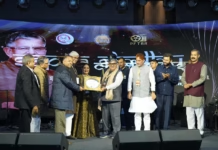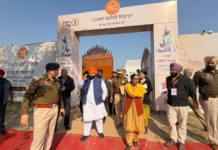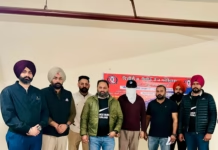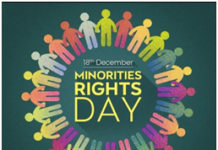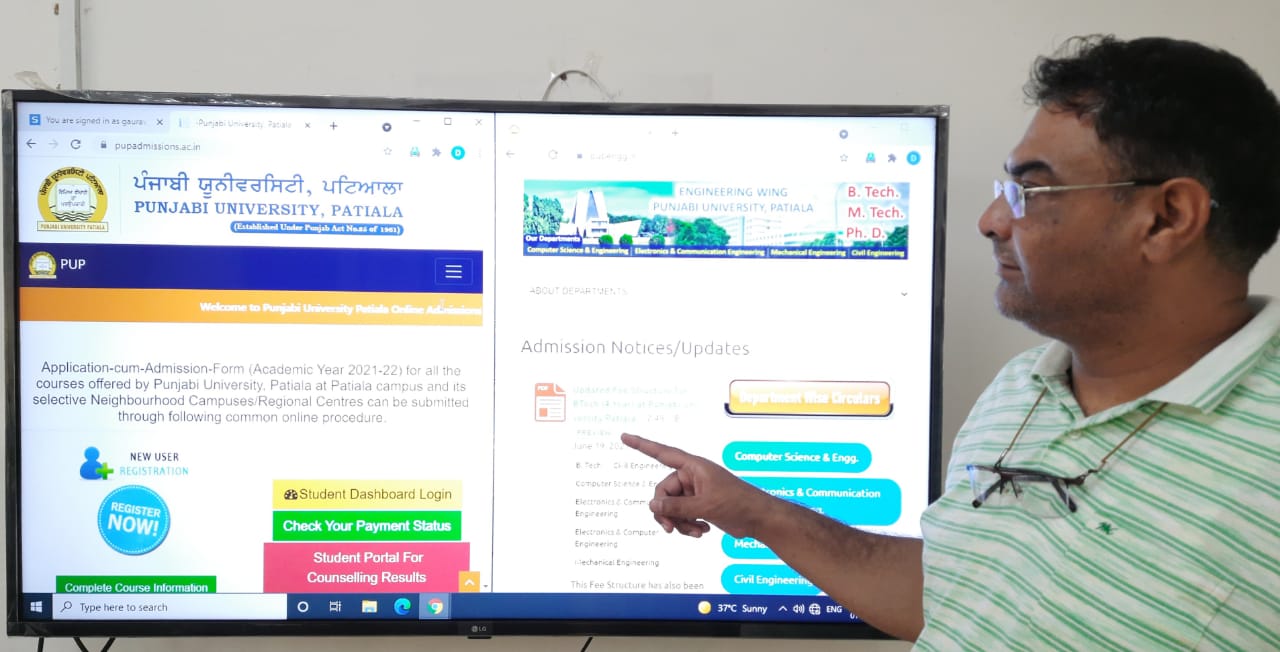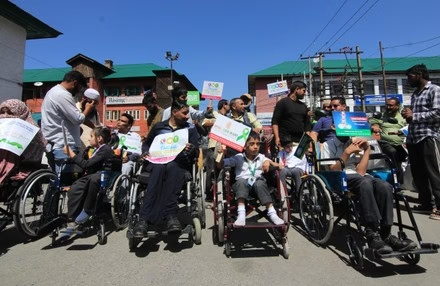

GUEST COLUMN: The unseen battle of Specially abled children in Jammu and Kashmir- Mohammad Hanief
Mohammad Hanief/ royalpatiala.in News/ November 22,2025
Specially abled children in Jammu and Kashmir continue to fight an unseen yet unyielding battle for dignity, inclusion, and opportunity. Their struggle begins at birth and persists throughout their lives, defined not only by physical or cognitive challenges but also by a society that still struggles to see them as equals. Beneath the region’s breathtaking mountains and tranquil valleys lies a quieter story—one of courage, resilience, and determination in the face of indifference.
Behind every beautiful sunrise over the Dal Lake or every bustling schoolyard in Srinagar lies a reality many prefer to overlook. For children with disabilities — whether physical, intellectual, or sensory — life in Jammu and Kashmir is a constant uphill climb. Their fight is not only against physical limitations but also against the invisible barriers of stigma, isolation, and indifference. In a society that often views disability through the lens of pity or shame, these children strive not just to live, but to belong.
According to official records, over 3.6 lakh people in Jammu and Kashmir live with disabilities, though experts believe the real number is much higher. Among them are thousands of children — each with dreams, laughter, and potential like any other. Yet, their paths are strewn with obstacles. In far-flung villages, children born with hearing or visual impairments often go undiagnosed for years. Families, unaware of available therapies or too poor to afford them, do what they can — sometimes carrying their children for miles to hospitals in Srinagar or Jammu, only to return with little hope and empty pockets.
Education, which should be a gateway to freedom, becomes another closed door. Most schools in the region are not built for inclusivity. There are no ramps for wheelchairs, no Braille textbooks for the visually impaired, no interpreters for those who cannot hear. Teachers, however kind, are rarely trained to teach children with special needs. In rural districts, where distances are long and winters harsh, many children never even make it to school. Some watch their siblings pack their bags each morning, wondering why they cannot do the same. Their classrooms remain confined to the four walls of their homes — silent, lonely, and full of unspoken dreams.
Even in urban centers like Srinagar or Jammu, where awareness is growing, the struggle persists. The few specialized schools available are often overcrowded or too expensive for ordinary families. Many parents face impossible choices — to send their child far away for education or to keep them close, safe, but uneducated. Either way, they carry a heavy burden of guilt and helplessness. For the children, the cost is deeper — they begin to internalize the belief that the world was not made for them.
But beyond policy failures and infrastructure gaps lies a more painful truth — society’s indifference. In many parts of Jammu and Kashmir, disability is still treated as misfortune, even punishment. Families of specially abled children often endure whispered comments, pitying stares, or cruel judgment. Some parents, in their heartbreak, hide their children from the world to shield them from humiliation. Yet, within those hidden rooms, you will find stories of incredible resilience — children who paint with their toes, learn to read through touch, or communicate through gestures filled with joy. Their spirit refuses to surrender.

Healthcare, too, remains a distant promise for many. While early diagnosis and therapy can make a world of difference, specialized services are rare and scattered. In districts like Kupwara, Kulgam, and Doda, rehabilitation centers are few, and therapists even fewer. Parents often undertake exhausting journeys across mountains and snow just to keep hope alive. Some sell their livestock to buy a wheelchair or a hearing aid; others rely on faith and persistence when medicine fails them. Every small milestone — a first step, a clear word, a steady hand — becomes a celebration of love and perseverance.
Amidst all this, there are flickers of light. Some organizations have become beacons of hope, offering therapy, counseling, and education to those forgotten by the system. Their centers echo with laughter, music, and stories of transformation. Here, children once confined by silence learn to speak through art and play. Here, parents find not pity, but understanding. These small spaces of compassion prove that change is possible — when empathy replaces apathy.
There are also stories of triumph that rise like spring blossoms after a long winter. A girl from Pulwama, born visually impaired, now teaches Braille to younger children. A boy from Baramulla, who lost his legs to an accident, paints breathtaking landscapes that capture the very mountains that once limited his movement. Another child from Jammu, born with hearing loss, has become a motivational speaker, helping others like him find their voice. These are not tales of charity — they are stories of strength, of what happens when a spark of opportunity meets the flame of determination.
Yet, for every success story, there are hundreds of unheard ones — children who remain locked away from the world, their laughter stifled by silence and shame. What they need is not sympathy, but inclusion. They need schools that welcome them, teachers who understand them, and communities that celebrate, not conceal, their differences. Above all, they need a society willing to see them — not as burdens, but as children with boundless potential.
The government, to its credit, has introduced several welfare programs — disability pensions, scholarships, and employment quotas — but the journey from policy to practice is uneven. Bureaucratic red tape, lack of awareness, and poor implementation mean that benefits often fail to reach those who need them most. The system must shift from a model of charity to one of empowerment — where access, dignity, and equality are non-negotiable rights, not favors.
The unseen battle of specially abled children in Jammu and Kashmir is, in truth, a mirror reflecting society’s conscience. Their fight is not only for ramps and wheelchairs but for recognition and respect. They are not seeking sympathy; they are seeking space — a rightful place in classrooms, playgrounds, and dreams. Their resilience exposes the cracks in our compassion and challenges the world to do better.
As dusk settles over the valley and the call to prayer echoes across the Dal Lake, somewhere a mother whispers words of encouragement to her child struggling to walk. Somewhere a father lifts his son into a wheelchair, determined that tomorrow he will reach school. Somewhere a teacher stays after class, helping a child read a single line of Braille. These small, unseen acts of love and endurance are what hold the valley together.
Disability does not define these children; courage does. Their strength is a quiet revolution — a reminder that inclusion is not a gift but a right, and that the truest beauty of Jammu and Kashmir lies not only in its mountains or meadows, but in the indomitable spirit of its children who refuse to be left behind.

NOTE: The views expressed by the writer, author are personal. The author is a senior analyst and can be mailed at [email protected] / X (Twitter): @haniefmha

